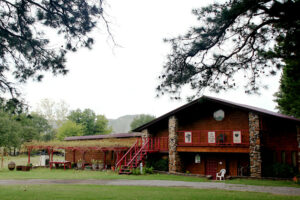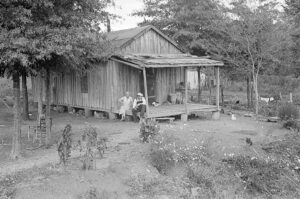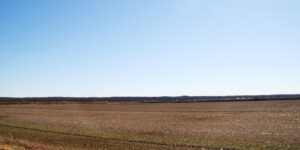calsfoundation@cals.org
Tasting Other Wines

An early friend of the CALS Encyclopedia of Arkansas, Bob Cowie, founder of Cowie Wine Cellars, once admonished me for saying something to the effect of Arkansans should only drink Arkansas wines. At the time, early in my tenure at the EOA, I had embraced a somewhat patriotic fervor when it comes to the state, and wine was one outlet for that enthusiasm. But Bob, although a fierce promoter of the state’s vintages himself, said to me:
“As a winemaker, I’m always sampling wines that come from other states or other countries, because to make good Arkansas wine, I need to understand wine itself as much as I can. I have to inquire into what other states and wineries are doing and see if I can use some of that knowledge here.”
Since that day long ago, and much to the relief of my wife (who prefers drier wines), I’ve not entirely scorned the odd out-of-state vintage. And I remember Bob’s admonition that to understand something well means understanding it both deep (that is, local) and wide (that is, in the broader context).
As with wine, so with history. You could, if you wanted, attempt to grasp Arkansas history by reading only books about Arkansas, but that won’t help you much with placing Arkansas in the broader context of things, and it’s in that broader context that Arkansas must be comprehended, for the state’s interactions with other states, the country as a whole, or the whole world have made it what it is now.
To understand Arkansas, you need to dabble in a little bit of everything else.
That is to say, borders constitute a convenient lie. Lines on a map may separate government authorities, but very little else. I was conscious of this recently while reading Alrik Gustafson’s magnificent 1961 book, A History of Swedish Literature. I bought the book back in October 2022 at a little shop in Lindsborg, Kansas, where my wife and I had gone for a brief vacation. (If we leave the state, it’s hard to think about work, but if we stay here, then someone—probably me—will tend to see something and say, “Hey, we don’t have that picture on the EOA, so let me just pull over here for a moment…”) Anyhow, as Gustafson points out, the early days of Swedish literature are challenging to separate from the broader picture of Scandinavian writing as a whole, especially given that parts of Sweden have, at different times in history, been part of Denmark and Norway, and vice versa. Moreover, Sweden, lying on the periphery of Europe, was not immune to the allure of French fashion or German intellectual currents; in fact, its leaders and scholars often sought out foreign styles and modes of thought, just as in the twentieth century, Swedish writers were influenced by currents in British and even American literature. To understand Swedish literature truly means understanding the why and how of these various influences.

In some ways, Sweden and Arkansas share some similarities. Up until the twentieth century, Sweden was largely an agricultural land. Just as Arkansas witnessed a “Great Migration” out of the state in the twentieth century due in large part to the growing unviability of farm labor as a career, what with mechanized agriculture eliminating jobs and the system of sharecropping leaving people beholden to plantation owners, so, too, did Sweden witness a massive outmigration a century earlier, due primarily to the inability of småbönder (small-holding peasant farmers) to live off land that had, through the generations, been subdivided among heirs into smaller and smaller plots. Those who left Sweden often ended up in the United States, where they had been recruited for settlement in the Midwest and West (that town of Lindsborg had been founded by such immigrants), while those who left Arkansas in the following century often went to more northern, urban locales, seeking work in factory jobs.
The differences, too, are rather informative. Sweden’s first university, Uppsala University, was founded in 1477, primarily for the education of clergy. During the reign of Gustav Vasa, however, the university was allowed to disintegrate completely (although it was later reestablished), for the new king had elected upon the path of Protestantism, while the university had been a bulwark of Catholic learning and teaching. In Arkansas, however, no state university was established until the 1870s, and only then because Powell Clayton was sitting in the governor’s office; had the antebellum elite its druthers, the University of Arkansas would never have been founded, for elite families could afford to send their children to schools elsewhere in the country, or abroad, and the plantation elite didn’t want any of their labor force securing an education. Private colleges and academies had been established even before the war, of course, but the idea that the state should play any kind of role in educating its citizens was anathema to most in power.

But reading this book has me wondering to what extent we can really talk about Arkansas literature. Somehow, the concept seems so much more tenuous than does the idea of a unique Swedish literature, for with regard to the latter, one can at least point to a unity of language and national borders (with some exceptions, such as the Swedish-speaking community in Finland, which has produced its own noteworthy writers), while Arkansas shares its language not only with the rest of the country but, these days, a good chunk of the world. Too, save for Crowley’s Ridge, there is no geographical region that is uniquely Arkansas, with the Delta in the east or the Ouachita Mountains in the west bleeding into other states, as do the rest of our geographical regions. While Arkansas is home to the True Grit Trail, most of the action in the novel takes place in neighboring Oklahoma. Many of the recipients of the Porter Prize have been affiliated with universities, hired from out of state, and so are incidentally or accidentally Arkansans (though we welcome them all!).
Which is not to say that the state lacks native literary talent. Only that discerning a uniquely Arkansan strain of literature is a much more challenging task than that which Alrik Gustafson assigned himself. But he had several hundred years to draw from. Maybe, if the state still exists in 500 years’ time, a clearer picture will emerge. Until then, there remain plenty of books by Arkansans that are well worth reading. Just remember Bob Cowie’s advice and don’t limit yourself. After all, those writers sure didn’t.
By Guy Lancaster, editor of the CALS Encyclopedia of Arkansas




